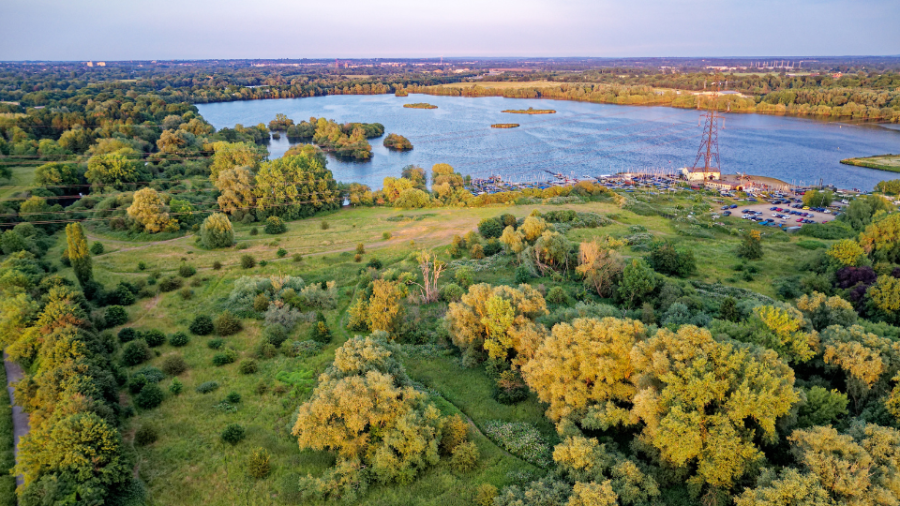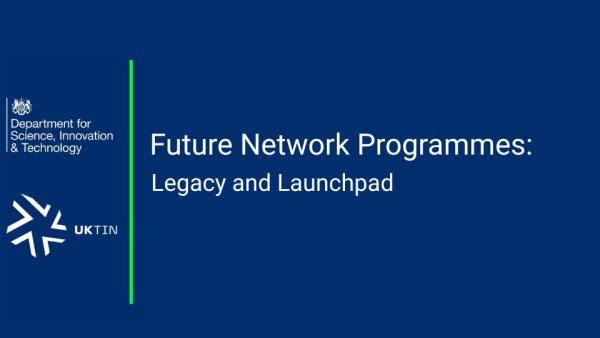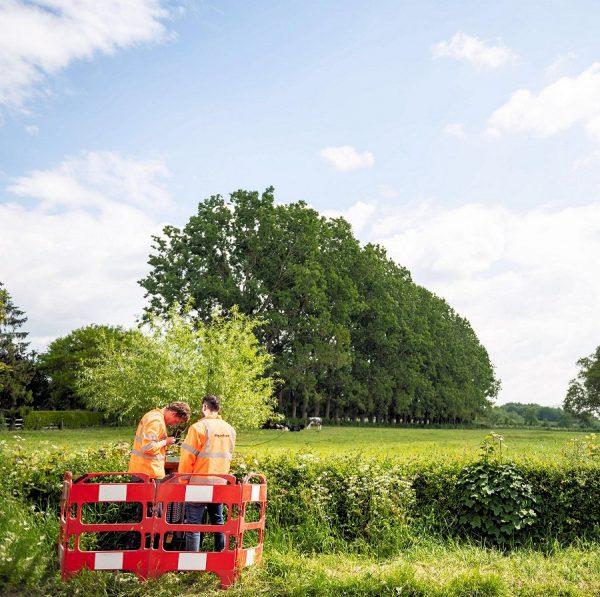
As the Future Network Programme concludes, UKTIN is working with DSIT to reflect on the government-funded projects, outlining the key outcomes and the lessons learned to help improve future telecoms initiatives.
Improving digital connectivity and supporting innovation is critical for the UK’s economy. Some of our country’s most profitable industries including tourism and farming are based in hard-to-reach areas, with rural England contributing 16.2% of the country's total gross value added (GVA) in 2022.
What has been your biggest challenge to date?
Catherine Weldon, Programme Manager at Connecting Cumbria speaking on behalf of The Borderlands 5G Innovation Region, said: “The current state of the private 5G market. There isn’t an easy route or framework for local authorities. We have had to do a lot of engagement and market development to identify a suitable supplier to enable delivery to our five rural venues within the time scales of the DSIT programme. We believe our work will make it easier for other projects in the future, but it is still a very naive market.”
James Standen, the farms' director for Newcastle University Farms, The North East Combined Authority 5G Innovation Region said: “We had a clear vision of where we wanted to go and what we wanted to deliver. Our biggest challenge was ensuring everyone within the team understood the vision, bearing in mind our project included external and internal partners and companies. Communicating the vision about the use case and development of new products was an issue, and we are still learning. We still don’t know exactly where we will end up in terms of perhaps a marketable product, but it’s exciting at least.”
Graham Worsley of REACH said: “It is worth noting that REACH focuses on Blackpool but we have a sub-project in the Lake District using infrastructure provided by the 5G Drive project. Trying to secure spectrum in very remote rural areas has proved difficult. Although not using it themselves the mobile operators have not agreed to provide more spectrum, which has resulted in wasted time - we thought we could get more spectrum. There’s a bit of an issue there with OfCom. Another issue is the uninterruptible power supply. One of the sites is based on a remote slate mine site which relies on a generator and there is no power when the slate mine isn’t in operation. You often don’t think about these practical things.”
Clifford Shapland, Ceredigion County Council, said: “Securing the infrastructure has been the biggest issue for us. It was a very short project, only six months with a very short lead time to get up and running and collect data. We approached public procurement twice, reaching out to 12 specialist providers - but received no interest. We extended the procurement call and still didn’t have any interest. With our timetable clock running down, we had to go through a scrutiny review and ask permission to directly approach a single supplier – explain our needs on a one-to-one basis and thus secure a local partner to buy the required parts directly. The parts still haven’t been delivered however, supply chain constraints and processes have resulted in ongoing delays. We are, however, now expecting delivery in the next week.”
Jo Furber, Relationship Manager at West Sussex County Council, The Growing Sussex 5G Innovation Region, said: “Attracting and maintaining commercial growers’ buy-in is key to the success of our project. Food, drink and plant production businesses are decision-driven 24 hours a day; we have to compete with the demands of the business for time and focus on implementing the build of a private 5G network and subsequent deployment of new technologies. Maintaining momentum across the complexities of rural connectivity build requires timely and consistent communication between the supplier and the growers which has proven challenging given the competing demands in both businesses. We’ve addressed this by resourcing the internal West Sussex County Council project team with the capacity to ‘broker’ discussions and translate complex engineering requirements from the supplier to the growers about their business needs and vice versa.”
Matt Smith, the Programme Manager for The River Severn Partnership Advanced Wireless Innovation Region, said: “Assembling a programme of activity from a standing start has been our biggest challenge. We had issues at the start with no staff and a loss of continuity between the approval in November and my start date in February. I think also our programme was far less defined than others were at the point of application, DSIT has acknowledged this. This meant we’ve had to go hell for leather ever since to catch up and to end where we have with a coherent programme covering the key sectors and involving every part of our massive region. Other areas of the programme have been pretty smooth in terms of partnerships and governance which can often be the main pain points, they haven’t been too bad yet. We’ve also benefited from keeping all of our procurement and individual procurement activity relatively low-level and spreading our activity across lots of projects, hence spreading the risk.”
What have you learned?
Catherine Weldon said: “Procurement preparation can’t be rushed. We hosted an open webinar for potential bidders to assist them in understanding the formal procurement process and the level of detailed information we were seeking. We have also seen a lot of potential for neutral host models in our remote areas where traditional mobile operators haven’t invested because they can’t see a good return on investment. But there is lots more work to be done before we can prove that any model for delivery for these areas will be robust. The areas we are targeting, it seems, will only work with a layer cake of use cases based on rural tourism zones – rather than just sparsely populated local markets. In addition, we learned that the solution has many uses! Though some use cases are specific to individual venues, the majority can be used in most venues. Public access to a private network is one example of improving the tourist experience and driving economic growth. Our use cases also align and support the broader DSIT 5GIR Programme objectives and deliver a range of visitor and operational management benefits.”
Standen said: “I think we are in a slightly different place to others. Our networks were relatively simple to install, so we are further down the line in getting use cases up and running. We’ve learned simple things about protocols, such as how you install the sensors and put them into the network – for example, though our soil sensors are GPS-located, we use white posts so people wouldn’t run over them. Data integration and how you interpret it was another learning curve. Don’t underestimate it! We are collecting lots of data and its visualisation and ensuring accessibility for different users has been a key learning point. We are still working out how to get the systems we’ve developed to market, we hope to take our methane sensors forward, and we are assessing how to do that. And we’re still considering how to develop our data integration system further into a product, which we think is around four to five years ahead of the market.”
Worsley added: “We found that commercial phones weren’t working on the 5G frequencies. Since we were working on mission-critical services, we bought ruggedised Crosscall phones from France that still had factory settings and managed the network that way. This enabled us to have full access and know exactly what the network was doing, rather than relying on the commercially available 5G phones.”
Clifford Shapland said: Our endeavours attracted attention, and we were directed onto another avenue of technology to address our use case. Following scrutiny and permission from senior leadership, we approached a specialist supplier which made procurement easier – you don't have to go out to market, as they hold intellectual property rights as a single supplier. This approach helped us accelerate the experimental nature of our project to get up and running, however, because again, parts weren't off the shelf and had not been used for our specialist use case, we have also had to develop workflows in terms of monitoring capabilities and sanitising the data to make sense of it ourselves. Learning was required to take these bespoke devices to provide data we could publish. That’s our success. We are now publishing dashboards to stakeholders. In retrospect, this was a better approach as we have learned so much more than we might have, by adding this bespoke solution to the project.”
Furber stated: “A lack of rural connectivity and limited digital skills are key barriers delaying both the growing and education sectors’ adoption of emerging technologies in growing practices. Providing a private 5G network at locations is half of the challenge, catalysing a change in the relationship between commercial growers and educators is the other half. We’ve learned there is a real appetite amongst both to work together and develop a digital skills curriculum that provides a future workforce cognisant of deploying foundational technologies in glasshouse, field and vineyard. We are using the project to drive this change and provide a vehicle everyone can coalesce around. Working with the University of Brighton, we expect to understand the need for a new employment stream of data managers and analysts supporting data-driven decision-making in growing environments in real-time and share that learning with the colleges for their own skills development.”
Smith contributed: “Counterintuitively, the vast majority of the ready-to-be-deployed technology can really make a difference and doesn’t need high-grade connectivity. I think a fixation on 5G masks the larger scale potential of deploying more wireless technology on readily accessible public networks; the sooner 5G is deployed on those public networks and the quicker the MNOs move to adopt network slicing the better. But this upgrade will disproportionately disaffect rural areas, and there’s still a lot that can be done with 4G and LoRaWAN.”
What advice would you give to others hoping to deploy rural connectivity?
Catherine Weldon said: “We would have liked to have spent more time engaging with our stakeholders before committing to the locations. We identified pages and pages of use cases but could potentially have identified a stronger package of use cases with more time to develop our initial bid. This would have ensured our plans were self-sustaining and viable from a much earlier stage; we are still confident that a self-sustaining model can be developed for our current use cases. From a rural perspective, where we are building these brand-new networks, it is easy to underestimate the complexities and sensitivities of the planning involved. Ideally, I would recommend pre-planning consultations to gain more information about the specific sites (for example, what is needed to get the radios up and operational and where precisely the coverage will help pay its way.) However, we expect to learn about this over the next few years. We will build a further site with our own money over the next 12 months and all of the work we are doing over the next three years will feed into that. There is a demand for robust, high-quality connectivity in rural areas that isn’t met by the commercial market, but that connectivity doesn’t join up with the main networks. Coming up with a solution to address this will be crucial over the next few years.”
Standen continued: “Don’t underestimate the timescales and technical problems that Catherine has alluded to. It took longer than expected to build a bespoke product and write code. I would also recommend speaking to the market. When we started, we knew where we wanted to go and the problems the industry was facing with methane emissions. Because of the delays in bringing 5G to market, the marketplace is creating solutions without it, so projects like this one are important for showing that they’ve got to build in 5G connectivity. The exchange of knowledge is also crucial – dissemination and communication are very important. In an ideal world, with a project farming calendar, we would have had the project up and running to match crop growing season. Unfortunately, due to delays, we can't show off the full scale of the capability. That has been frustrating.”
Worsley added: “We were looking at low-cost, lower TRL small-cell systems. However, there is a trade-off between experimenting – but still providing e.g. coverage for 999 and flood warnings – and having expensive infrastructure that requires a lot of planning. What you’re getting might not be the same quality as what you might get in e.g. London but it can still be of great value.”
Clifford Shapland said: “Don’t do it in the winter! The project’s operation during challenging winter conditions, such as Storm Dennis which was quickly followed by the far worse - Storm Darragh, has tested our infrastructure's resilience to an extreme, nonetheless our failures have provided us with critical learning opportunities. These insights have been essential to signpost vulnerabilities in our desktop designs and have allowed us to improve reliability, adapting our solutions for long-term environmental monitoring. In reality, this was the principal purpose of the funding we were fortunate enough to have secured from DSIT: to test rural connectivity solutions in Winter, the harshest of environments at the worst time of the year.”
Furber said: “Everybody needs to work better together to develop the locally skilled workforce – and more quickly, to develop technical understanding and digital skills to make sense of the devices and applications enabled by 5G within the region. One of the challenges post-Brexit is that we don’t have access to seasonal workers. We want to develop a skilled and well-paid workforce. We hope to offer new workstreams into land-based employment, enabling career progression and more middle-management opportunities. Not only is our project exciting for us but local people too.”
Smith concluded: “We need a concerted effort between the public and private sectors to improve coverage. Private networks are not the widescale solution. Focus on technology that can operate on whatever connectivity is available rather than focusing on the most bleeding edge technology.”









